Comminuted Supracondylar Femoral Fracture with Lateral Pericondylar Extension
Score and Comment on this Case
Clinical Details
Clinical and radiological findings: A 55-year-old female, wheelchair-bound with multiple comorbidities and hemiplegia, sustained a fall from her wheelchair directly onto her knee. The injury resulted in a highly comminuted supracondylar femoral fracture with lateral pericondylar extension, classified as AO/OTA 33-A3. There was no intra-articular split noted. The fracture was closed, and the neurovascular examination was unremarkable.
Preoperative Plan
Planning remarks: Closed reduction of the fracture with the patient in a supine position. Correct the extension of the distal fragments using a roll placed under the distal thigh. The fixation strategy included the use of a retrograde intramedullary nail, (13mm Supracondylar Nail (Styker), with dual condyle bolts to secure the distal fracture extension.
Surgical Discussion
Patient positioning: The patient was positioned supine on the operating table. A roll was strategically placed under the distal thigh to facilitate the correction of the fragment extension during the closed reduction maneuver.
Anatomical surgical approach: A medial parapatellar percutaneous approach was utilized for the insertion of the retrograde intramedullary nail. The entry point was established at the intercondylar notch of the distal femur under fluoroscopic guidance. Poller wires were used to guide the nail and fragment trajectory. The nail was advanced proximally through the medullary canal, and dual condyle bolts adequately stabilized the lateral pericondylar extension.
Operative remarks:The choice of a retrograde intramedullary nail was deemed appropriate given the patient's hemiplegic status and limited mobility. it allowed for early mobilization and weight-bearing as tolerated for pivto transfer
Postoperative protocol: Not specified.
Follow up: Not specified.
Search for Related Literature

Dr Ed Oates
- Germany , Schleswig Holstein
- Area of Specialty - General Trauma
- Position - Specialist Consultant

Industry Sponsership
contact us for advertising opportunities
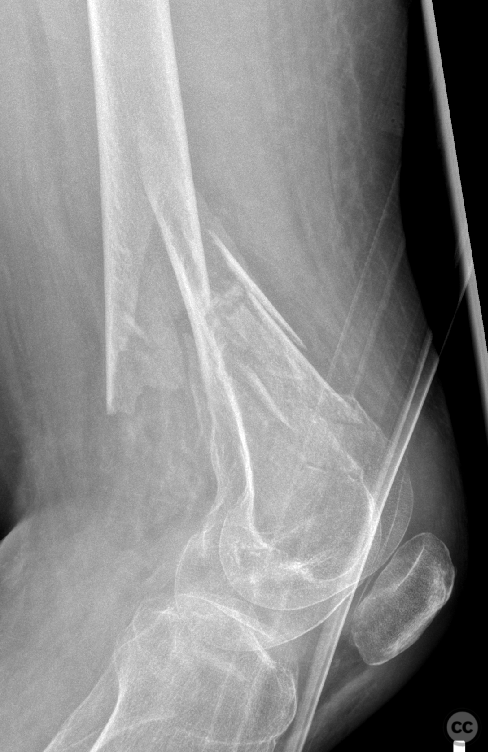
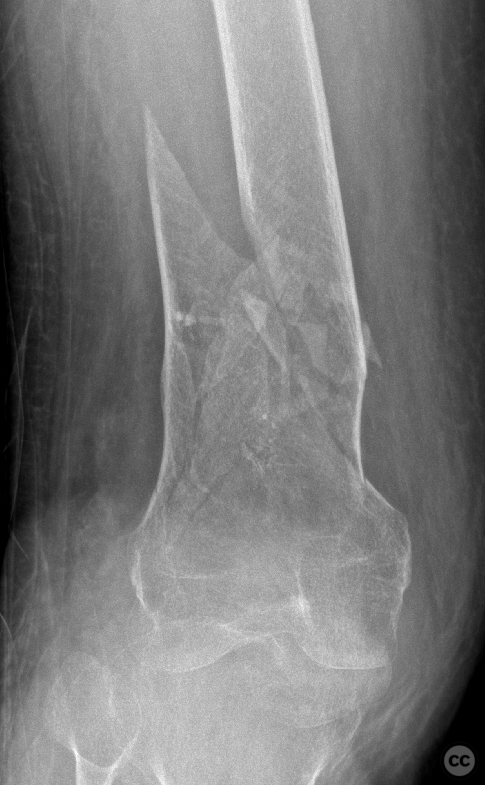
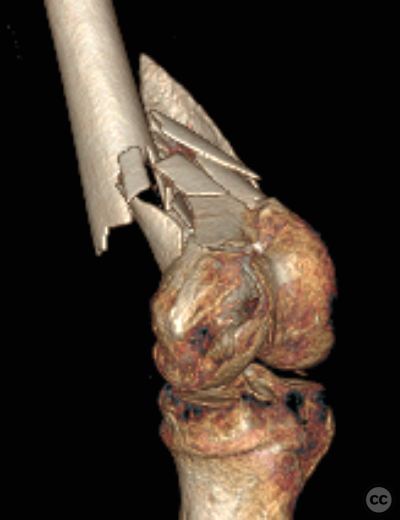
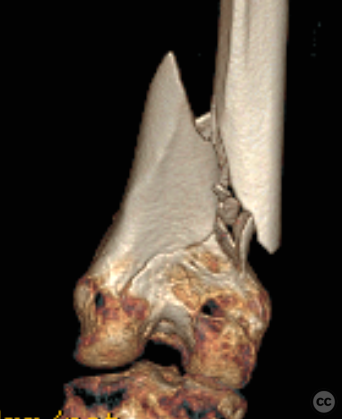
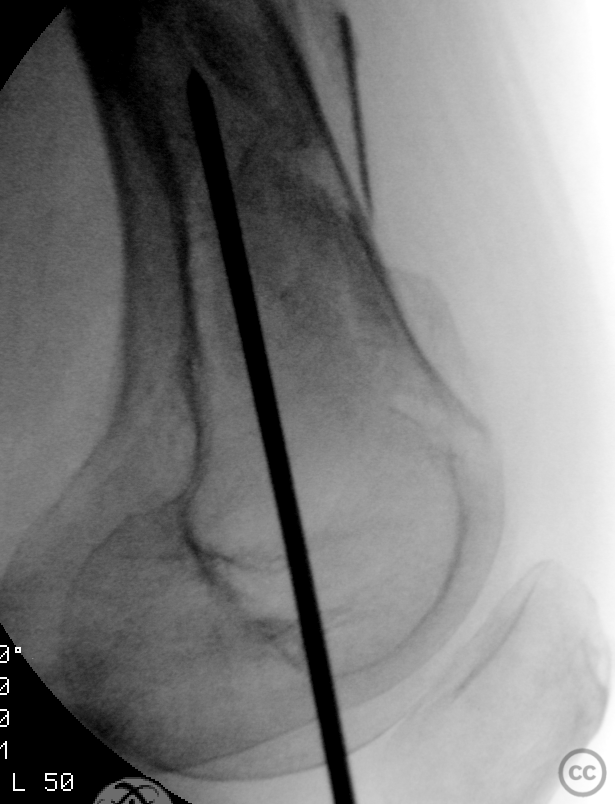
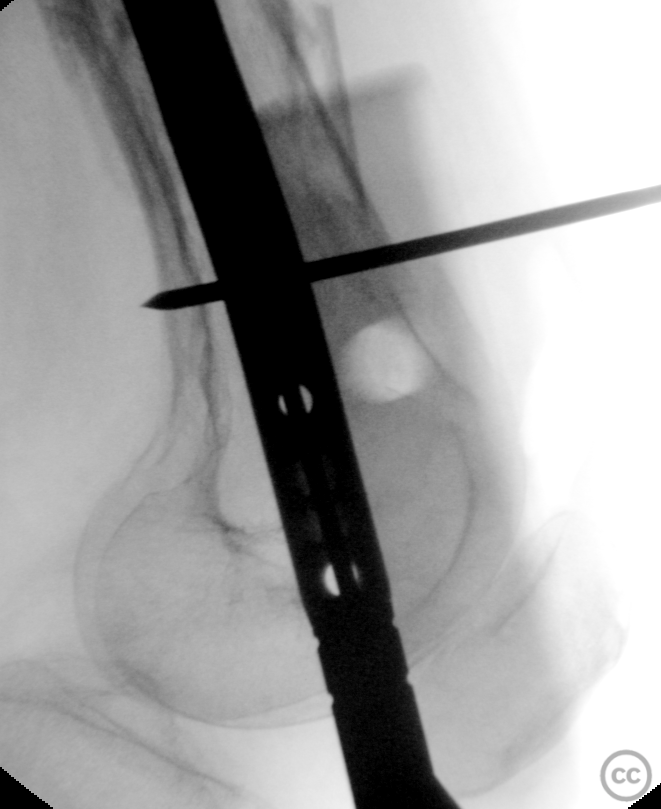
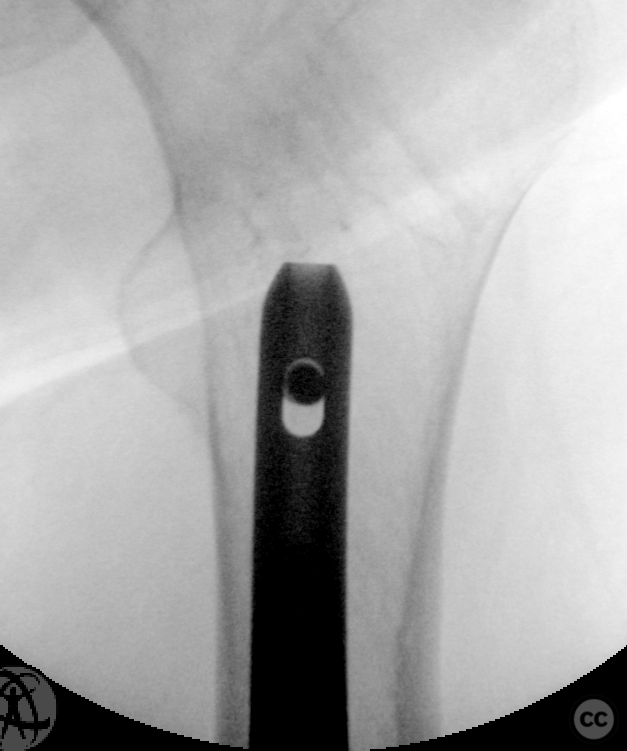
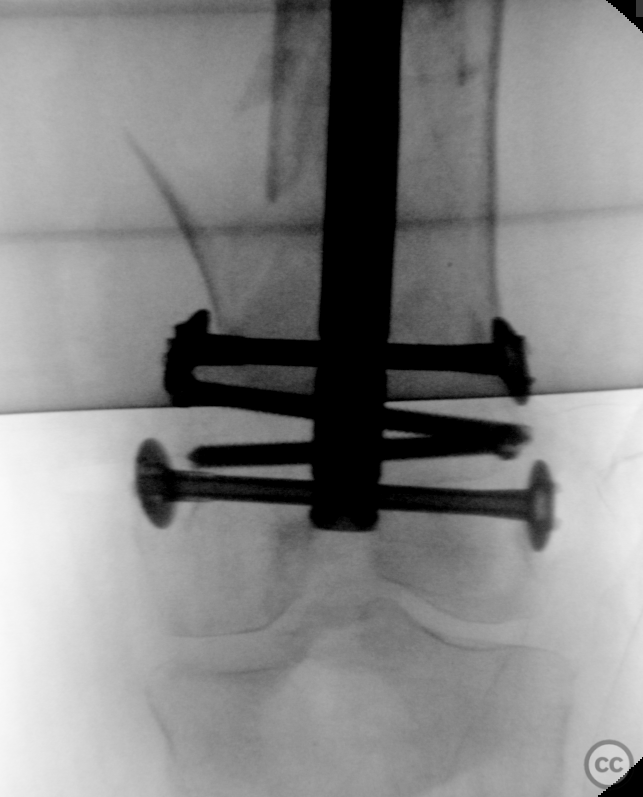
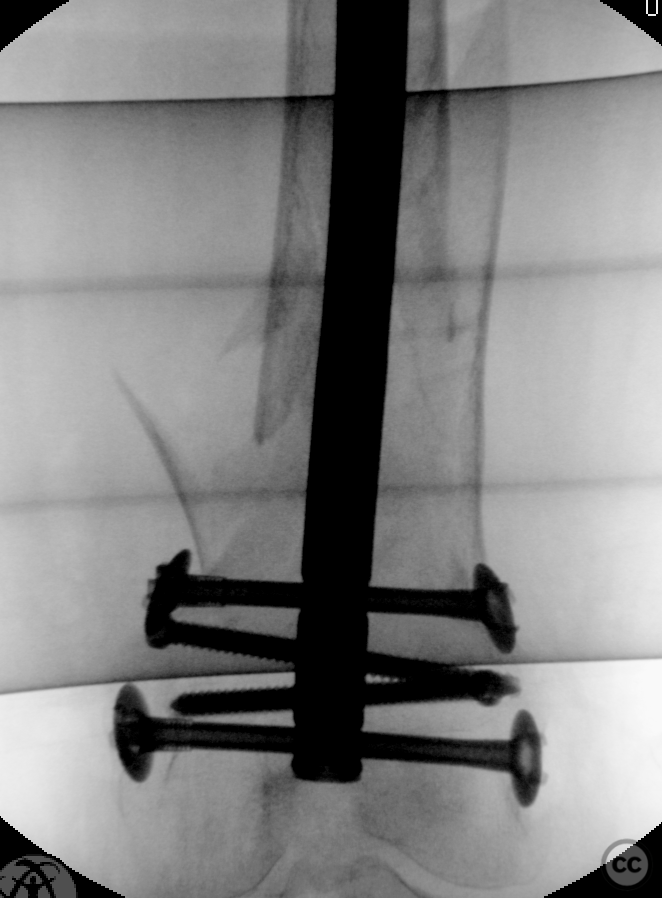
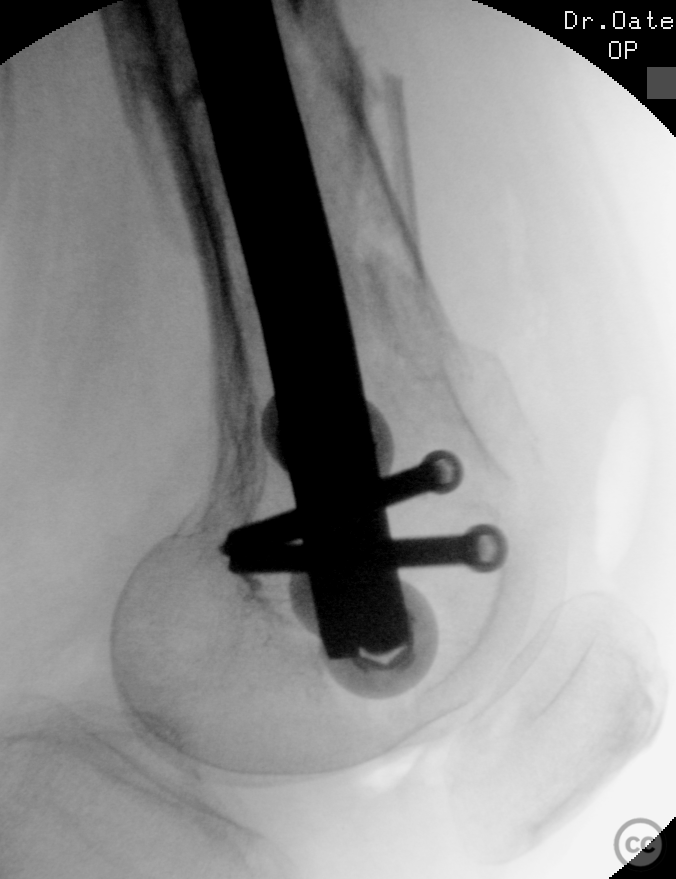

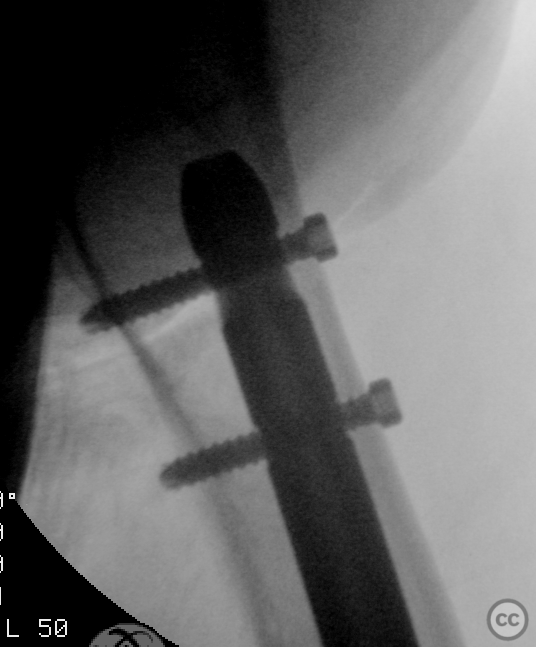
Article viewed 653 times
22 Dec 2024
Add to Bookmarks
Full Citation
Cite this article:
Oates, E.J. (2024). Comminuted Supracondylar Femoral Fracture with Lateral Pericondylar Extension. Journal of Orthopaedic Surgery and Traumatology. Case Report 21911526 Published Online Dec 22 2024.